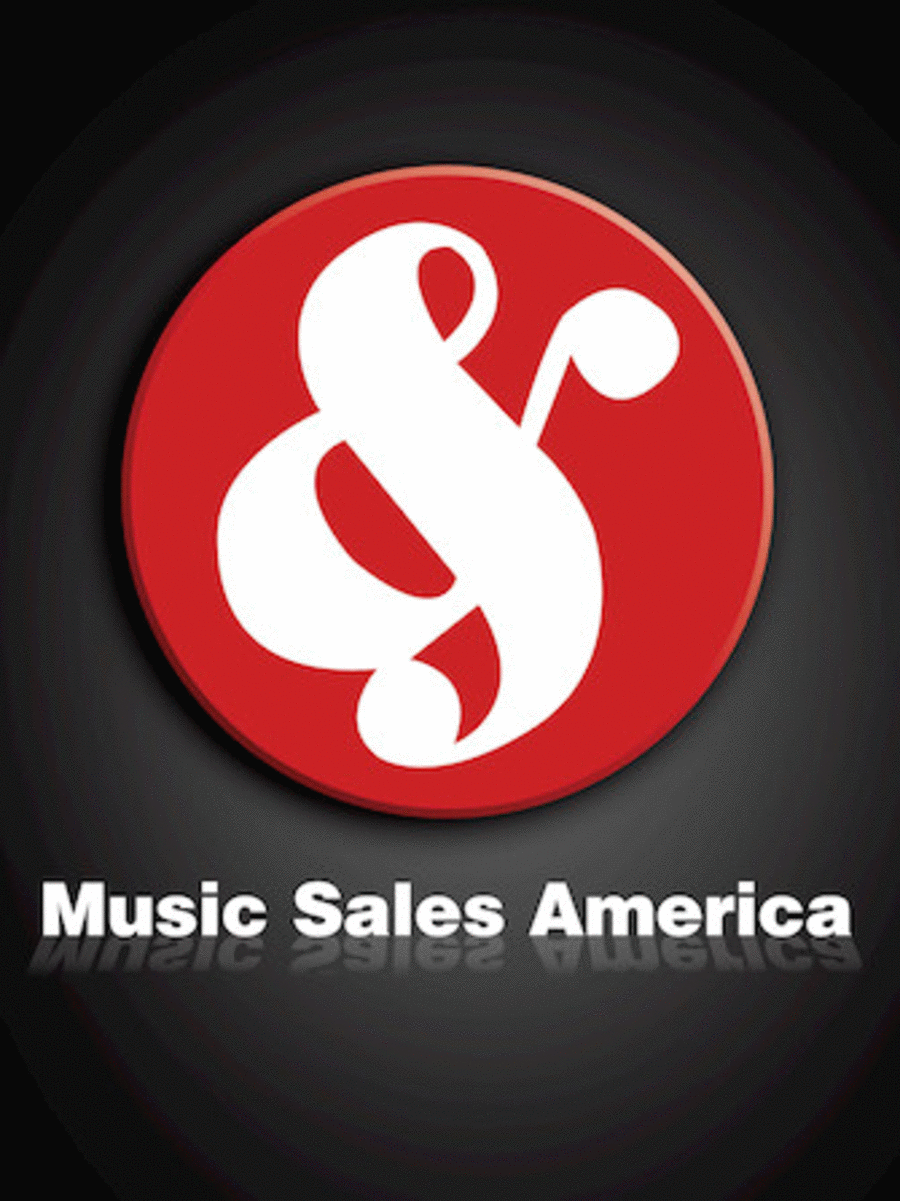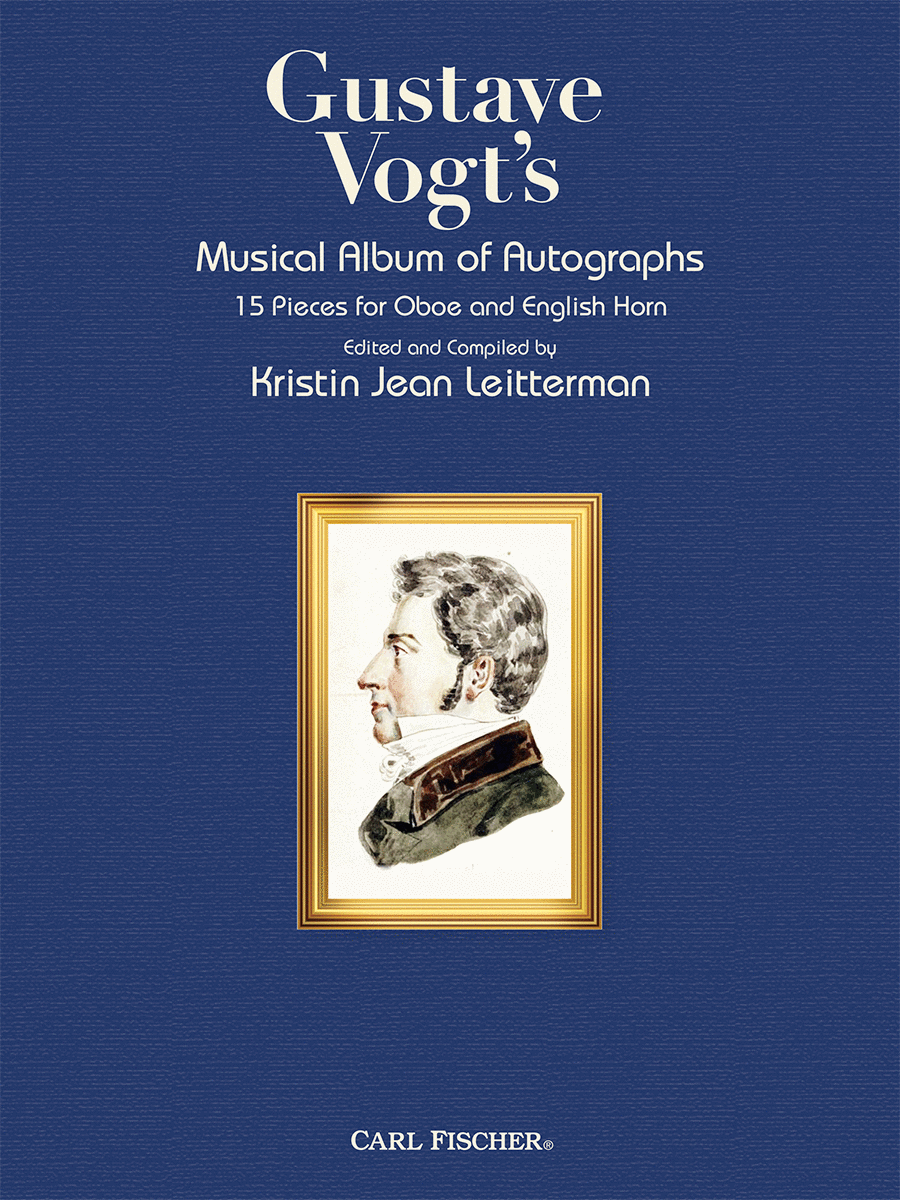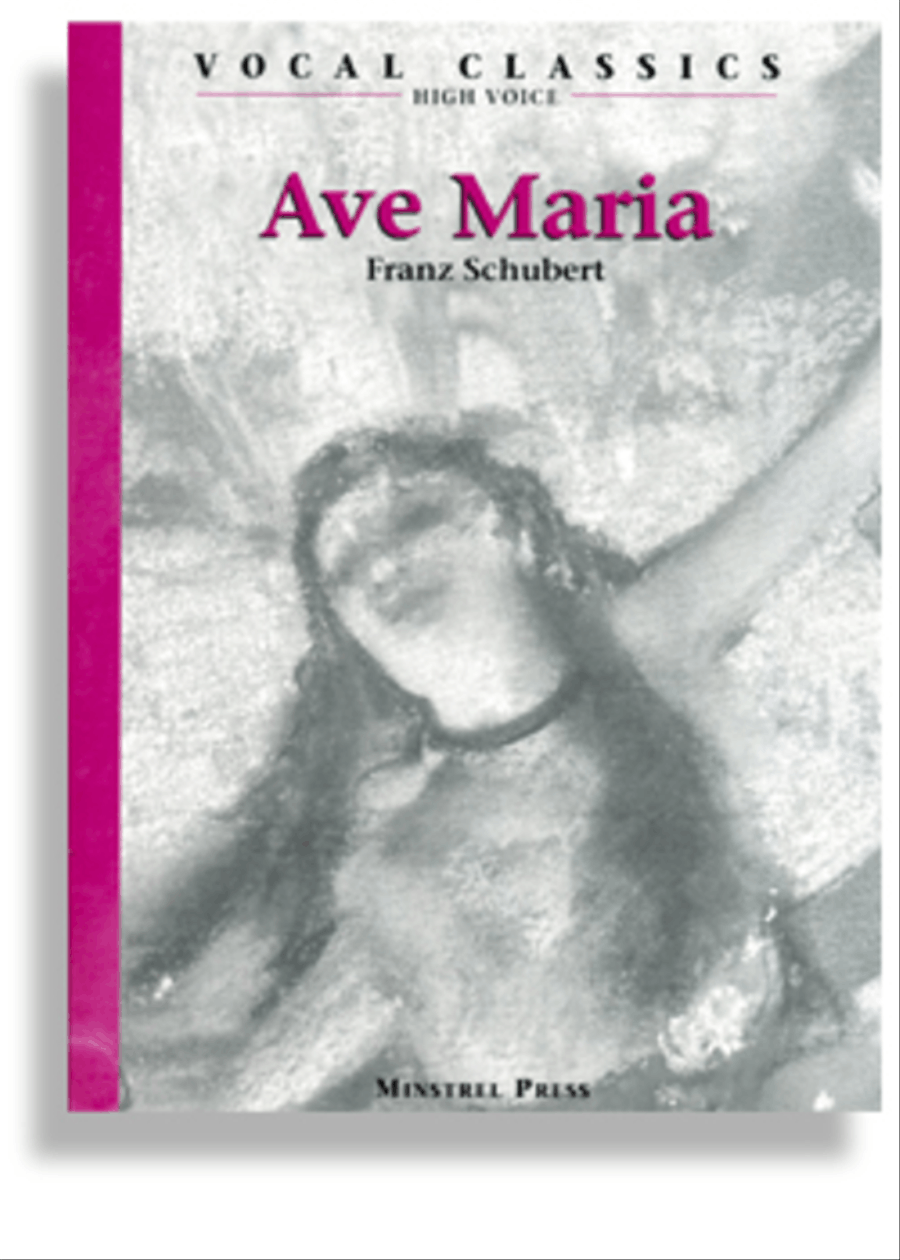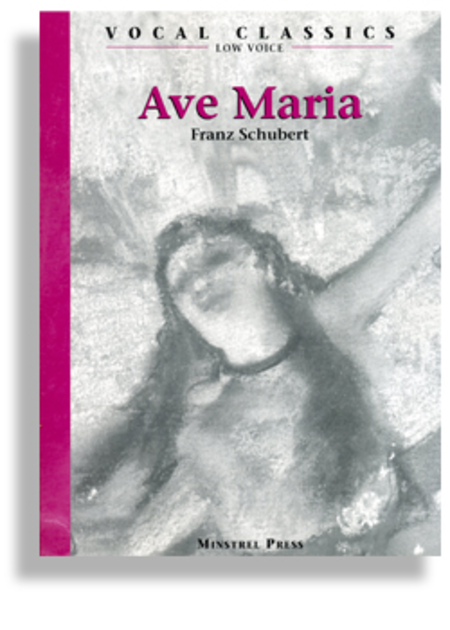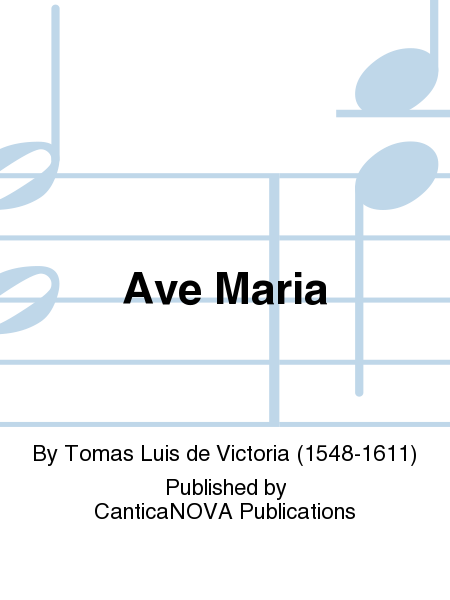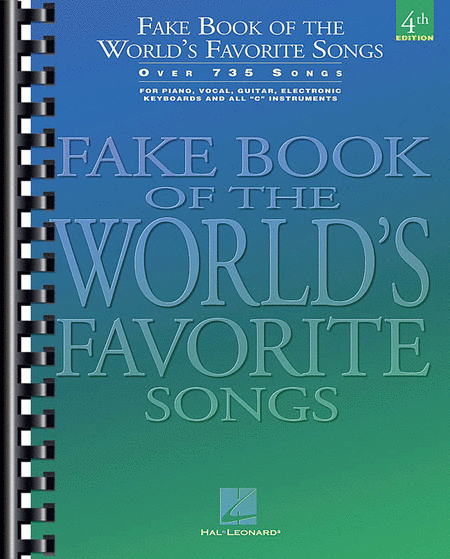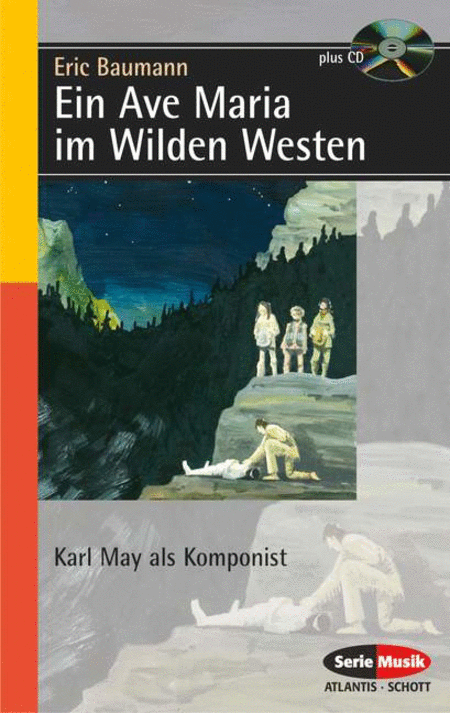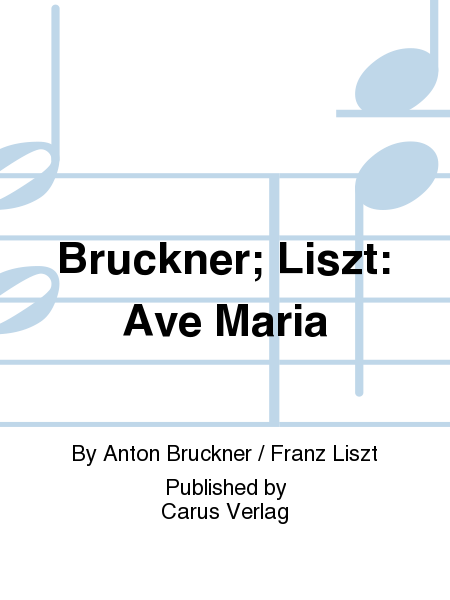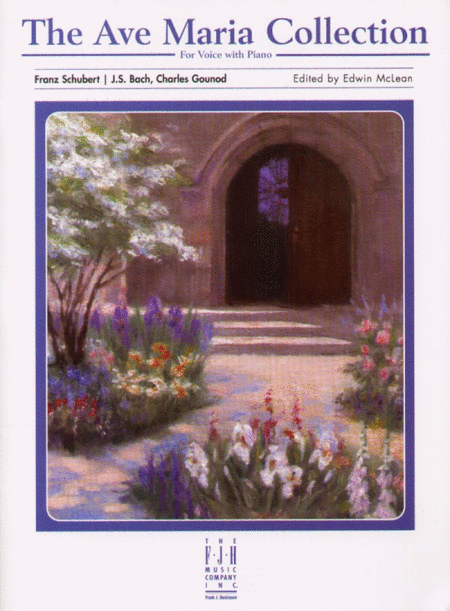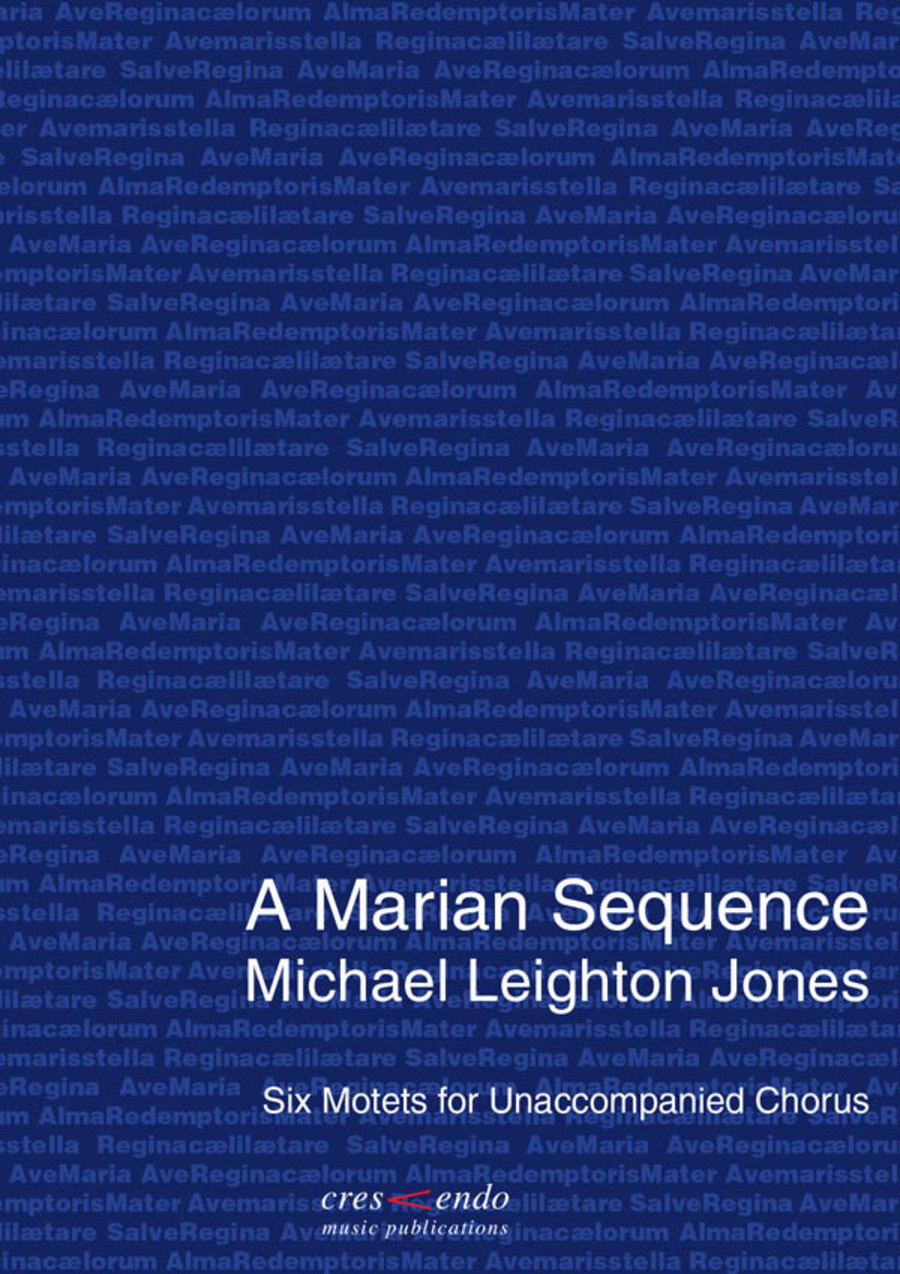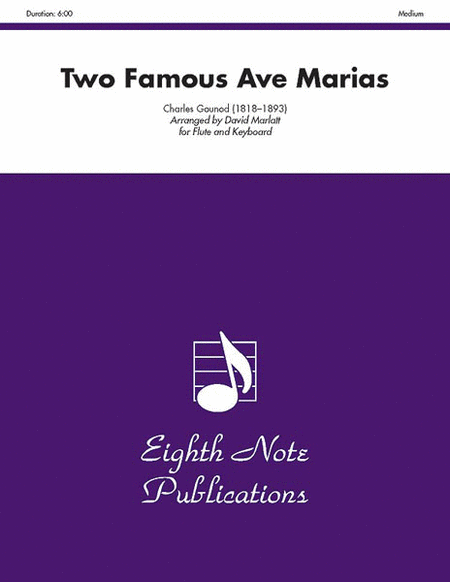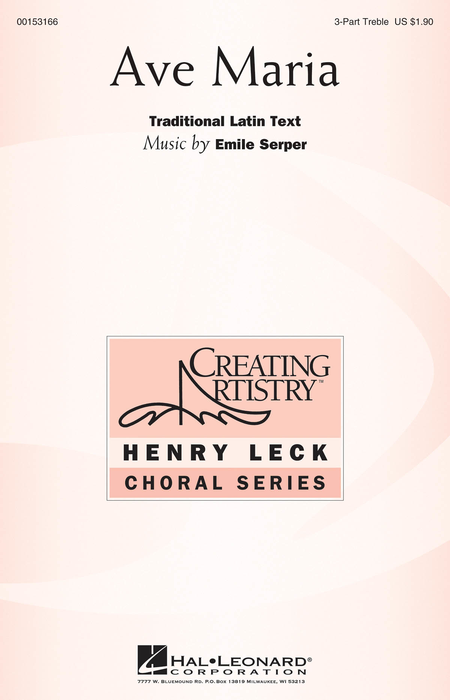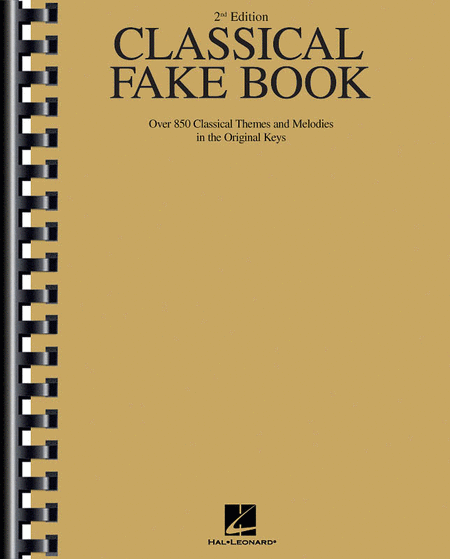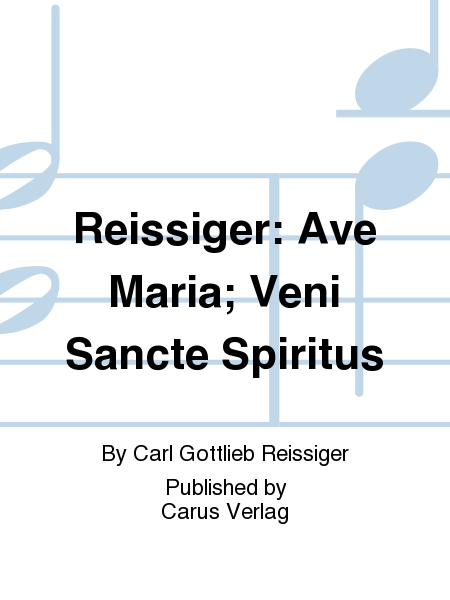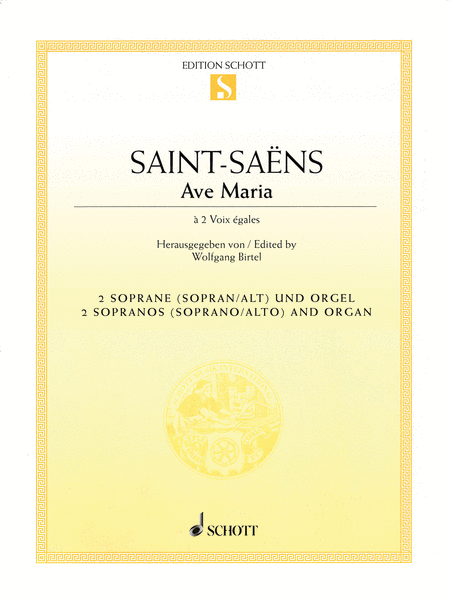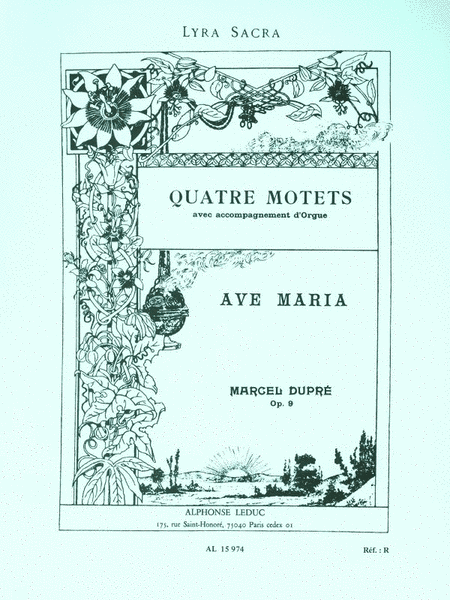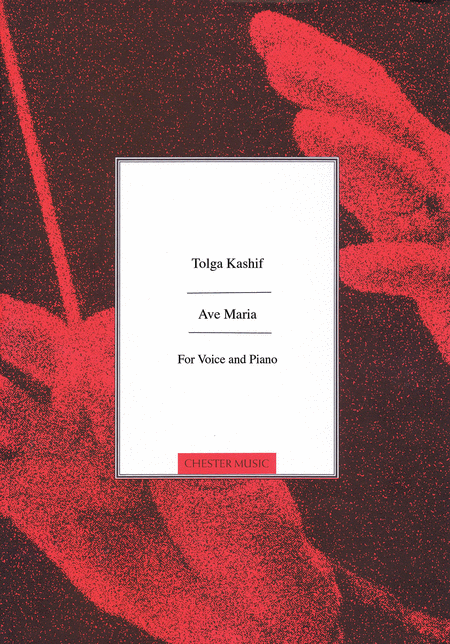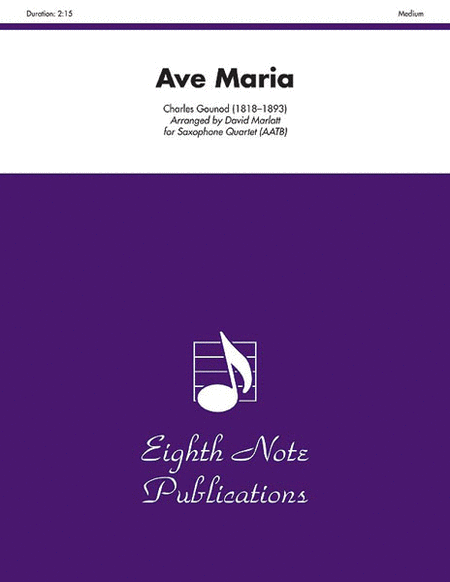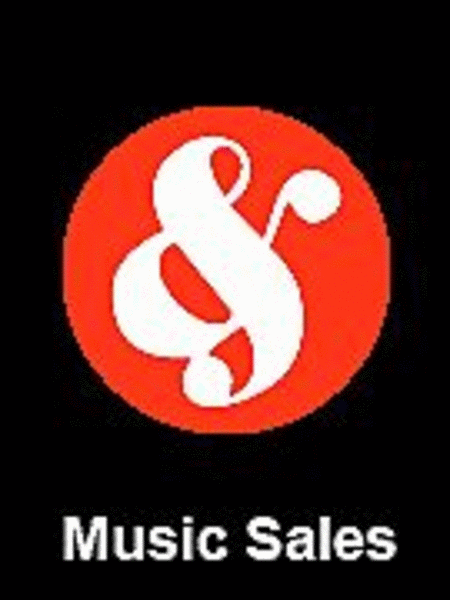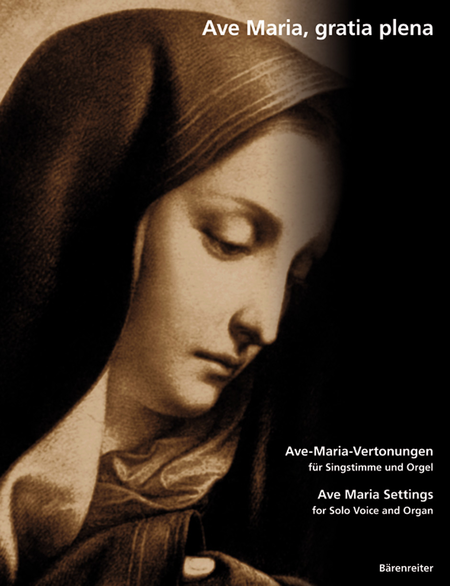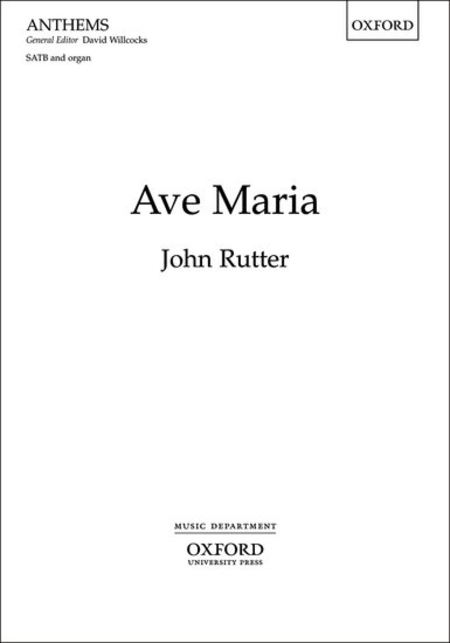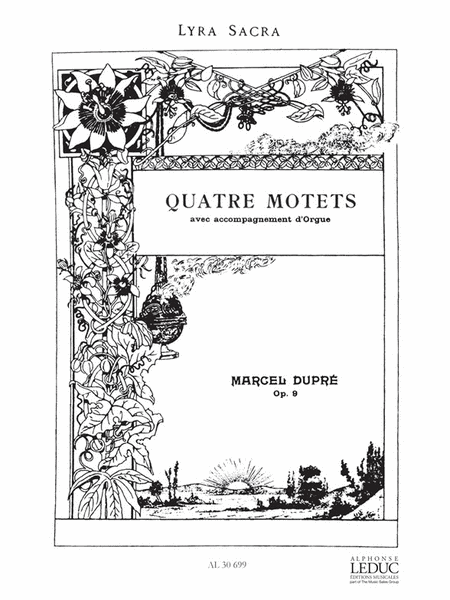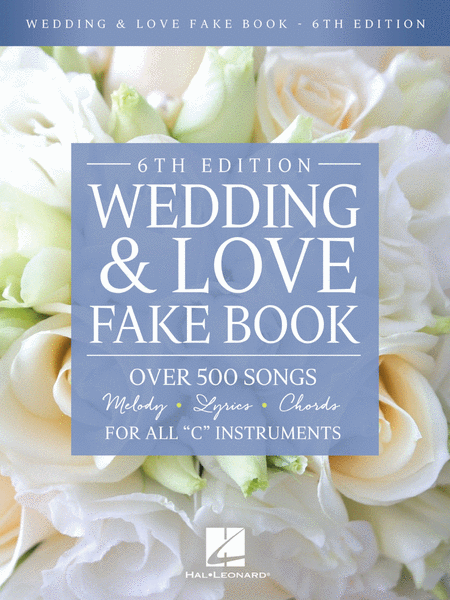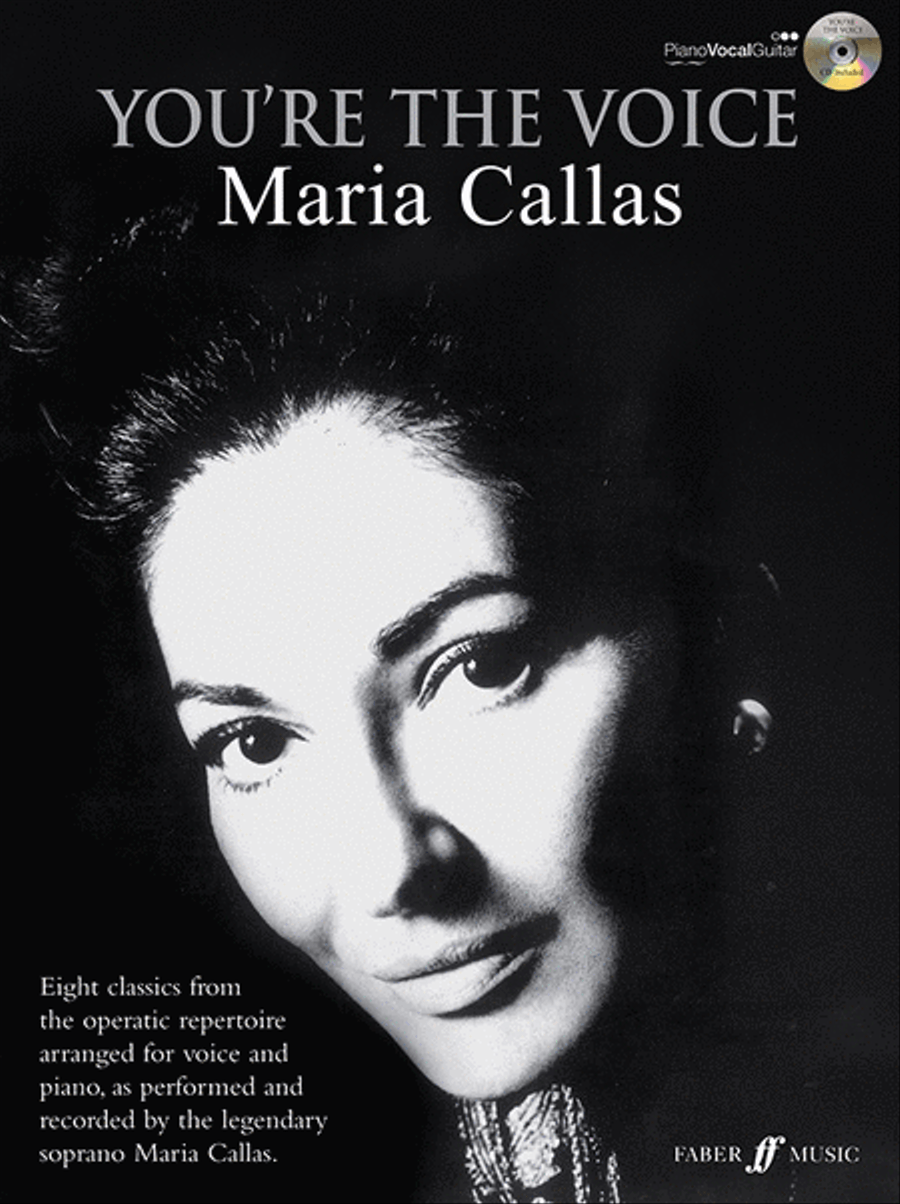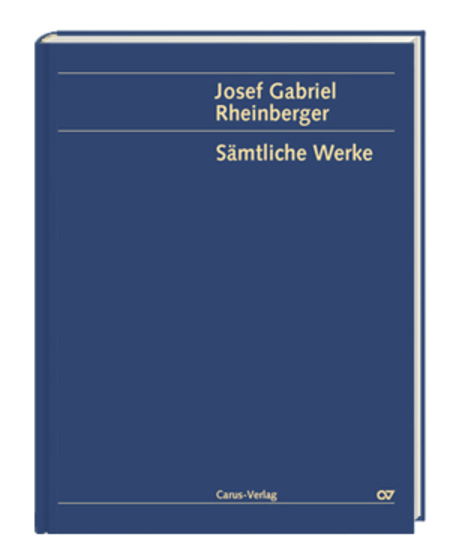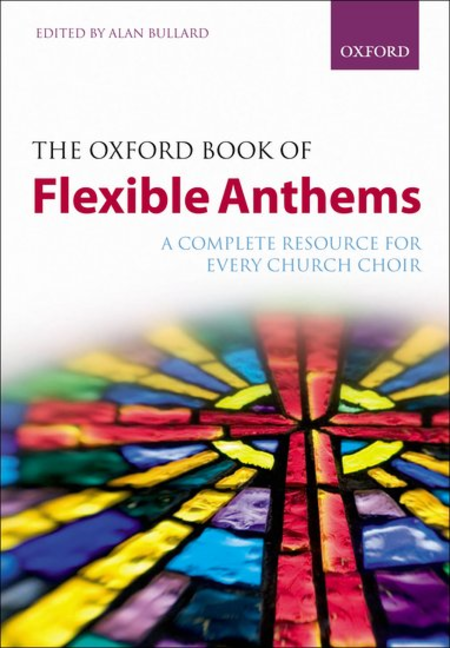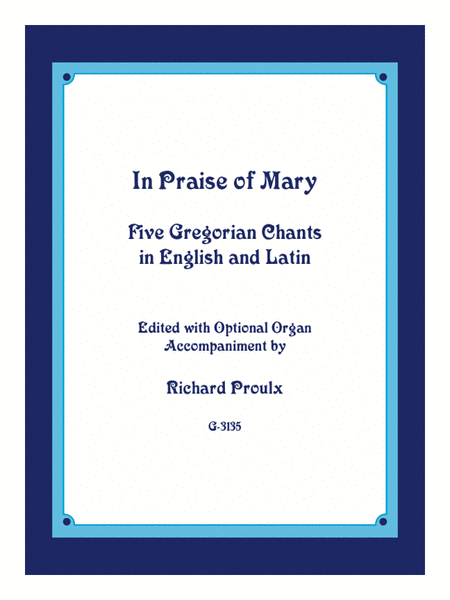|
| Buskers Fake Book All Time Hit
Piano seul
Music Sales
| | | |
| Gustave Vogt's Musical Album of Autographs
Cor anglais, Piano
Carl Fischer
Chamber Music English Horn, Oboe SKU: CF.WF229 15 Pieces for Oboe and ...(+)
Chamber Music English
Horn, Oboe SKU:
CF.WF229 15 Pieces
for Oboe and English
Horn. Composed by
Gustave Vogt. Edited by
Kristin Jean Leitterman.
Collection - Performance.
32+8 pages. Carl Fischer
Music #WF229. Published
by Carl Fischer Music
(CF.WF229). ISBN
9781491153789. UPC:
680160911288. Intro
duction Gustave Vogt's
Musical Paris Gustave
Vogt (1781-1870) was born
into the Age of
Enlightenment, at the
apex of the
Enlightenment's outreach.
During his lifetime he
would observe its effect
on the world. Over the
course of his life he
lived through many
changes in musical style.
When he was born,
composers such as Mozart
and Haydn were still
writing masterworks
revered today, and
eighty-nine years later,
as he departed the world,
the new realm of
Romanticism was beginning
to emerge with Mahler,
Richard Strauss and
Debussy, who were soon to
make their respective
marks on the musical
world. Vogt himself left
a huge mark on the
musical world, with
critics referring to him
as the grandfather of the
modern oboe and the
premier oboist of Europe.
Through his eighty-nine
years, Vogt would live
through what was perhaps
the most turbulent period
of French history. He
witnessed the French
Revolution of 1789,
followed by the many
newly established
governments, only to die
just months before the
establishment of the
Third Republic in 1870,
which would be the
longest lasting
government since the
beginning of the
revolution. He also
witnessed the
transformation of the
French musical world from
one in which opera
reigned supreme, to one
in which virtuosi,
chamber music, and
symphonic music ruled.
Additionally, he
experienced the
development of the oboe
right before his eyes.
When he began playing in
the late eighteenth
century, the standard
oboe had two keys (E and
Eb) and at the time of
his death in 1870, the
System Six Triebert oboe
(the instrument adopted
by Conservatoire
professor, Georges
Gillet, in 1882) was only
five years from being
developed. Vogt was born
March 18, 1781 in the
ancient town of
Strasbourg, part of the
Alsace region along the
German border. At the
time of his birth,
Strasbourg had been
annexed by Louis XIV, and
while heavily influenced
by Germanic culture, had
been loosely governed by
the French for a hundred
years. Although it is
unclear when Vogt began
studying the oboe and
when his family made its
move to the French
capital, the Vogts may
have fled Strasbourg in
1792 after much of the
city was destroyed during
the French Revolution. He
was without question
living in Paris by 1798,
as he enrolled on June 8
at the newly established
Conservatoire national de
Musique to study oboe
with the school's first
oboe professor,
Alexandre-Antoine
Sallantin (1775-1830).
Vogt's relationship with
the Conservatoire would
span over half a century,
moving seamlessly from
the role of student to
professor. In 1799, just
a year after enrolling,
he was awarded the
premier prix, becoming
the fourth oboist to
achieve this award. By
1802 he had been
appointed repetiteur,
which involved teaching
the younger students and
filling in for Sallantin
in exchange for a free
education. He maintained
this rank until 1809,
when he was promoted to
professor adjoint and
finally to professor
titulaire in 1816 when
Sallantin retired. This
was a position he held
for thirty-seven years,
retiring in 1853, making
him the longest serving
oboe professor in the
school's history. During
his tenure, he became the
most influential oboist
in France, teaching
eighty-nine students,
plus sixteen he taught
while he was professor
adjoint and professor
titulaire. Many of these
students went on to be
famous in their own
right, such as Henri Brod
(1799-1839), Apollon
Marie-Rose Barret
(1804-1879), Charles
Triebert (1810-1867),
Stanislas Verroust
(1814-1863), and Charles
Colin (1832-1881). His
influence stretches from
French to American oboe
playing in a direct line
from Charles Colin to
Georges Gillet
(1854-1920), and then to
Marcel Tabuteau
(1887-1966), the oboist
Americans lovingly
describe as the father of
American oboe playing.
Opera was an important
part of Vogt's life. His
first performing position
was with the
Theatre-Montansier while
he was still studying at
the Conservatoire.
Shortly after, he moved
to the Ambigu-Comique
and, in 1801 was
appointed as first oboist
with the Theatre-Italien
in Paris. He had been in
this position for only a
year, when he began
playing first oboe at the
Opera-Comique. He
remained there until
1814, when he succeeded
his teacher,
Alexandre-Antoine
Sallantin, as soloist
with the Paris Opera, the
top orchestra in Paris at
the time. He played with
the Paris Opera until
1834, all the while
bringing in his current
and past students to fill
out the section. In this
position, he began to
make a name for himself;
so much so that specific
performances were
immortalized in memoirs
and letters. One comes
from a young Hector
Berlioz (1803-1865) after
having just arrived in
Paris in 1822 and
attended the Paris
Opera's performance of
Mehul's Stratonice and
Persuis' ballet Nina. It
was in response to the
song Quand le bien-amie
reviendra that Berlioz
wrote: I find it
difficult to believe that
that song as sung by her
could ever have made as
true and touching an
effect as the combination
of Vogt's instrument...
Shortly after this,
Berlioz gave up studying
medicine and focused on
music. Vogt frequently
made solo and chamber
appearances throughout
Europe. His busiest
period of solo work was
during the 1820s. In 1825
and 1828 he went to
London to perform as a
soloist with the London
Philharmonic Society.
Vogt also traveled to
Northern France in 1826
for concerts, and then in
1830 traveled to Munich
and Stuttgart, visiting
his hometown of
Strasbourg on the way.
While on tour, Vogt
performed Luigi
Cherubini's (1760-1842)
Ave Maria, with soprano
Anna (Nanette) Schechner
(1806-1860), and a
Concertino, presumably
written by himself. As a
virtuoso performer in
pursuit of repertoire to
play, Vogt found himself
writing much of his own
music. His catalog
includes chamber music,
variation sets, vocal
music, concerted works,
religious music, wind
band arrangements, and
pedagogical material. He
most frequently performed
his variation sets, which
were largely based on
themes from popular
operas he had, presumably
played while he was at
the Opera. He made his
final tour in 1839,
traveling to Tours and
Bordeaux. During this
tour he appeared with the
singer Caroline Naldi,
Countess de Sparre, and
the violinist Joseph
Artot (1815-1845). This
ended his active career
as a soloist. His
performance was described
in the Revue et gazette
musicale de Paris as
having lost none of his
superiority over the
oboe.... It's always the
same grace, the same
sweetness. We made a trip
to Switzerland, just by
closing your eyes and
listening to Vogt's oboe.
Vogt was also active
performing in Paris as a
chamber and orchestral
musician. He was one of
the founding members of
the Societe des Concerts
du Conservatoire, a group
established in 1828 by
violinist and conductor
Francois-Antoine Habeneck
(1781-1849). The group
featured faculty and
students performing
alongside each other and
works such as Beethoven
symphonies, which had
never been heard in
France. He also premiered
the groundbreaking
woodwind quintets of
Antonin Reicha
(1770-1836). After his
retirement from the Opera
in 1834 and from the
Societe des Concerts du
Conservatoire in 1842,
Vogt began to slow down.
His final known
performance was of
Cherubini's Ave Maria on
English horn with tenor
Alexis Dupont (1796-1874)
in 1843. He then began to
reflect on his life and
the people he had known.
When he reached his 60s,
he began gathering
entries for his Musical
Album of Autographs.
Autograph Albums Vogt's
Musical Album of
Autographs is part of a
larger practice of
keeping autograph albums,
also commonly known as
Stammbuch or Album
Amicorum (meaning book of
friendship or friendship
book), which date back to
the time of the
Reformation and the
University of Wittenberg.
It was during the
mid-sixteenth century
that students at the
University of Wittenberg
began passing around
bibles for their fellow
students and professors
to sign, leaving messages
to remember them by as
they moved on to the next
part of their lives. The
things people wrote were
mottos, quotes, and even
drawings of their family
coat of arms or some
other scene that meant
something to the owner.
These albums became the
way these young students
remembered their school
family once they had
moved on to another
school or town. It was
also common for the
entrants to comment on
other entries and for the
owner to amend entries
when they learned of
important life details
such as marriage or
death. As the practice
continued, bibles were
set aside for emblem
books, which was a
popular book genre that
featured allegorical
illustrations (emblems)
in a tripartite form:
image, motto, epigram.
The first emblem book
used for autographs was
published in 1531 by
Andrea Alciato
(1492-1550), a collection
of 212 Latin emblem
poems. In 1558, the first
book conceived for the
purpose of the album
amicorum was published by
Lyon de Tournes
(1504-1564) called the
Thesaurus Amicorum. These
books continued to
evolve, and spread to
wider circles away from
universities. Albums
could be found being kept
by noblemen, physicians,
lawyers, teachers,
painters, musicians, and
artisans. The albums
eventually became more
specialized, leading to
Musical Autograph Albums
(or Notestammbucher).
Before this
specialization, musicians
contributed in one form
or another, but our
knowledge of them in
these albums is mostly
limited to individual
people or events. Some
would simply sign their
name while others would
insert a fragment of
music, usually a canon
(titled fuga) with text
in Latin. Canons were
popular because they
displayed the
craftsmanship of the
composer in a limited
space. Composers
well-known today,
including J. S. Bach,
Telemann, Mozart,
Beethoven, Dowland, and
Brahms, all participated
in the practice, with
Beethoven being the first
to indicate an interest
in creating an album only
of music. This interest
came around 1815. In an
1845 letter from Johann
Friedrich Naue to
Heinrich Carl
Breidenstein, Naue
recalled an 1813 visit
with Beethoven, who
presented a book
suggesting Naue to
collect entries from
celebrated musicians as
he traveled. Shortly
after we find Louis Spohr
speaking about leaving on
his grand tour through
Europe in 1815 and of his
desire to carry an album
with entries from the
many artists he would
come across. He wrote in
his autobiography that
his most valuable
contribution came from
Beethoven in 1815.
Spohr's Notenstammbuch,
comprised only of musical
entries, is
groundbreaking because it
was coupled with a
concert tour, allowing
him to reach beyond the
Germanic world, where the
creation of these books
had been nearly
exclusive. Spohr brought
the practice of
Notenstammbucher to
France, and in turn
indirectly inspired Vogt
to create a book of his
own some fifteen years
later. Vogt's Musical
Album of Autographs
Vogt's Musical Album of
Autographs acts as a form
of a memoir, displaying
mementos of musicians who
held special meaning in
his life as well as
showing those with whom
he was enamored from the
younger generation. The
anonymous Pie Jesu
submitted to Vogt in 1831
marks the beginning of an
album that would span
nearly three decades by
the time the final entry,
an excerpt from Charles
Gounod's (1818-1893)
Faust, which premiered in
1859, was submitted.
Within this album we find
sixty-two entries from
musicians whom he must
have known very well
because they were
colleagues at the
Conservatoire, or
composers of opera whose
works he was performing
with the Paris Opera.
Other entries came from
performers with whom he
had performed and some
who were simply passing
through Paris, such as
Joseph Joachim
(1831-1907). Of the
sixty-three total
entries, some are
original, unpublished
works, while others came
from well-known existing
works. Nineteen of these
works are for solo piano,
sixteen utilize the oboe
or English horn, thirteen
feature the voice (in
many different
combinations, including
vocal solos with piano,
and small choral settings
up to one with double
choir), two feature
violin as a solo
instrument, and one even
features the now obscure
ophicleide. The
connections among the
sixty-two contributors to
Vogt's album are
virtually never-ending.
All were acquainted with
Vogt in some capacity,
from long-time
friendships to
relationships that were
created when Vogt
requested their entry.
Thus, while Vogt is the
person who is central to
each of these musicians,
the web can be greatly
expanded. In general, the
connections are centered
around the Conservatoire,
teacher lineages, the
Opera, and performing
circles. The
relationships between all
the contributors in the
album parallel the
current musical world, as
many of these kinds of
relationships still
exist, and permit us to
fantasize who might be
found in an album created
today by a musician of
the same standing. Also
important, is what sort
of entries the
contributors chose to
pen. The sixty-three
entries are varied, but
can be divided into
published and unpublished
works. Within the
published works, we find
opera excerpts, symphony
excerpts, mass excerpts,
and canons, while the
unpublished works include
music for solo piano,
oboe or English horn,
string instruments
(violin and cello), and
voice (voice with piano
and choral). The music
for oboe and English horn
works largely belong in
the unpublished works of
the album. These entries
were most likely written
to honor Vogt. Seven are
for oboe and piano and
were contributed by
Joseph Joachim, Pauline
Garcia Viardot
(1821-1910), Joseph
Artot, Anton Bohrer
(1783-1852), Georges
Onslow (1784-1853),
Desire Beaulieu
(1791-1863), and Narcisse
Girard (1797-1860). The
common thread between
these entries is the
simplicity of the melody
and structure. Many are
repetitive, especially
Beaulieu's entry, which
features a two-note
ostinato throughout the
work, which he even
included in his
signature. Two composers
contributed pieces for
English horn and piano,
and like the previous
oboe entries, are simple
and repetitive. These
were written by Michele
Carafa (1787-1872) and
Louis Clapisson
(1808-1866). There are
two other entries that
were unpublished works
and are chamber music.
One is an oboe trio by
Jacques Halevy
(1799-1862) and the other
is for oboe and strings
(string trio) by J. B.
Cramer (1771-1858). There
are five published works
in the album for oboe and
English horn. There are
three from operas and the
other two from symphonic
works. Ambroise Thomas
(1811-1896) contributed
an excerpt from the
Entr'acte of his opera La
Guerillero, and was
likely chosen because the
oboe was featured at this
moment. Hippolyte Chelard
(1789-1861) also chose to
honor Vogt by writing for
English horn. His entry,
for English horn and
piano, is taken from his
biggest success, Macbeth.
The English horn part was
actually taken from Lady
Macbeth's solo in the
sleepwalking scene.
Vogt's own entry also
falls into this category,
as he entered an excerpt
from Donizetti's Maria di
Rohan. The excerpt he
chose is a duet between
soprano and English horn.
There are two entries
featuring oboe that are
excerpted from symphonic
repertoire. One is a
familiar oboe melody from
Beethoven's Pastoral
Symphony entered by his
first biographer, Anton
Schindler (1796-1864).
The other is an excerpt
from Berlioz's choral
symphony, Romeo et
Juliette. He entered an
oboe solo from the Grand
Fete section of the
piece. Pedagogical
benefit All of these
works are lovely, and fit
within the album
wonderfully, but these
works also are great oboe
and English horn music
for young students. The
common thread between
these entries is the
simplicity of the melody
and structure. Many are
repetitive, especially
Beaulieu's entry, which
features a two-note
ostinato throughout the
work in the piano. This
repetitive structure is
beneficial for young
students for searching
for a short solo to
present at a studio
recital, or simply to
learn. They also work
many technical issues a
young player may
encounter, such as
mastering the rolling
finger to uncover and
recover the half hole.
This is true of Bealieu's
Pensee as well as
Onslow's Andantino.
Berlioz's entry from
Romeo et Juliette
features very long
phrases, which helps with
endurance and helps keep
the air spinning through
the oboe. Some of the
pieces also use various
levels of ornamentation,
from trills to grace
notes, and short
cadenzas. This allows the
student to learn
appropriate ways to
phrase with these added
notes. The chamber music
is a valuable way to
start younger students
with chamber music,
especially the short
quartet by Cramer for
oboe and string trio. All
of these pieces will not
tax the student to learn
a work that is more
advanced, as well as give
them a full piece that
they can work on from
beginning to end in a
couple weeks, instead of
months. Editorial Policy
The works found in this
edition are based on the
manuscript housed at the
Morgan Library in New
York City (call number
Cary 348, V886. A3). When
possible, published
scores were consulted and
compared to clarify pitch
and text. The general
difficulties in creating
an edition of these works
stem from entries that
appear to be hastily
written, and thus omit
complete articulations
and dynamic indications
for all passages and
parts. The manuscript has
been modernized into a
performance edition. The
score order from the
manuscript has been
retained. If an entry
also exists in a
published work, and this
was not indicated on the
manuscript, appropriate
titles and subtitles have
been added tacitly. For
entries that were
untitled, the beginning
tempo marking or
expressive directive has
been added as its title
tacitly. Part names have
been changed from the
original language to
English. If no part name
was present, it was added
tacitly. All scores are
transposing where
applicable. Measure
numbers have been added
at the beginning of every
system. Written
directives have been
retained in the original
language and are placed
relative to where they
appear in the manuscript.
Tempo markings from the
manuscript have been
retained, even if they
were abbreviated, i.e.,
Andte. The barlines,
braces, brackets, and
clefs are modernized. The
beaming and stem
direction has been
modernized. Key
signatures have been
modernized as some of the
flats/sharps do not
appear on the correct
lines or spaces. Time
signatures have been
modernized. In a few
cases, when a time
signature was missing in
the manuscript, it has
been added tacitly.
Triplet and rhythmic
groupings have been
modernized. Slurs, ties,
and articulations
(staccato and accent)
have been modernized.
Slurs, ties, and
articulations have been
added to parallel
passages tacitly.
Courtesy accidentals
found in the manuscript
have been removed, unless
it appeared to be helpful
to the performer. Dynamic
indications from the
manuscript have been
retained, except where
noted. --Kristin
Leitterman.
Introducti
onGustave Vogt’s
Musical ParisGustave Vogt
(1781–1870) was
born into the “Age
of Enlightenment,â€
at the apex of the
Enlightenment’s
outreach. During his
lifetime he would observe
its effect on the world.
Over the course of his
life he lived through
many changes in musical
style. When he was born,
composers such as Mozart
and Haydn were still
writing masterworks
revered today, and
eighty-nine years later,
as he departed the world,
the new realm of
Romanticism was beginning
to emerge with Mahler,
Richard Strauss and
Debussy, who were soon to
make their respective
marks on the musical
world. Vogt himself left
a huge mark on the
musical world, with
critics referring to him
as the “grandfather
of the modern oboeâ€
and the “premier
oboist of
Europe.â€Through his
eighty-nine years, Vogt
would live through what
was perhaps the most
turbulent period of
French history. He
witnessed the French
Revolution of 1789,
followed by the many
newly established
governments, only to die
just months before the
establishment of the
Third Republic in 1870,
which would be the
longest lasting
government since the
beginning of the
revolution. He also
witnessed the
transformation of the
French musical world from
one in which opera
reigned supreme, to one
in which virtuosi,
chamber music, and
symphonic music ruled.
Additionally, he
experienced the
development of the oboe
right before his eyes.
When he began playing in
the late eighteenth
century, the standard
oboe had two keys (E and
Eb) and at the time of
his death in 1870, the
“System Sixâ€
Triébert oboe (the
instrument adopted by
Conservatoire professor,
Georges Gillet, in 1882)
was only five years from
being developed.Vogt was
born March 18, 1781 in
the ancient town of
Strasbourg, part of the
Alsace region along the
German border. At the
time of his birth,
Strasbourg had been
annexed by Louis XIV, and
while heavily influenced
by Germanic culture, had
been loosely governed by
the French for a hundred
years. Although it is
unclear when Vogt began
studying the oboe and
when his family made its
move to the French
capital, the Vogts may
have fled Strasbourg in
1792 after much of the
city was destroyed during
the French Revolution. He
was without question
living in Paris by 1798,
as he enrolled on June 8
at the newly established
Conservatoire national de
Musique to study oboe
with the school’s
first oboe professor,
Alexandre-Antoine
Sallantin
(1775–1830).Vogtâ
€™s relationship with
the Conservatoire would
span over half a century,
moving seamlessly from
the role of student to
professor. In 1799, just
a year after enrolling,
he was awarded the
premier prix, becoming
the fourth oboist to
achieve this award. By
1802 he had been
appointed
répétiteur, which
involved teaching the
younger students and
filling in for Sallantin
in exchange for a free
education. He maintained
this rank until 1809,
when he was promoted to
professor adjoint and
finally to professor
titulaire in 1816 when
Sallantin retired. This
was a position he held
for thirty-seven years,
retiring in 1853, making
him the longest serving
oboe professor in the
school’s history.
During his tenure, he
became the most
influential oboist in
France, teaching
eighty-nine students,
plus sixteen he taught
while he was professor
adjoint and professor
titulaire. Many of these
students went on to be
famous in their own
right, such as Henri Brod
(1799–1839),
Apollon Marie-Rose Barret
(1804–1879),
Charles Triebert
(1810–1867),
Stanislas Verroust
(1814–1863), and
Charles Colin
(1832–1881). His
influence stretches from
French to American oboe
playing in a direct line
from Charles Colin to
Georges Gillet
(1854–1920), and
then to Marcel Tabuteau
(1887–1966), the
oboist Americans lovingly
describe as the
“father of American
oboe playing.â€Opera
was an important part of
Vogt’s life. His
first performing position
was with the
Théâtre-Montansier
while he was still
studying at the
Conservatoire. Shortly
after, he moved to the
Ambigu-Comique and, in
1801 was appointed as
first oboist with the
Théâtre-Italien in
Paris. He had been in
this position for only a
year, when he began
playing first oboe at the
Opéra-Comique. He
remained there until
1814, when he succeeded
his teacher,
Alexandre-Antoine
Sallantin, as soloist
with the Paris Opéra,
the top orchestra in
Paris at the time. He
played with the Paris
Opéra until 1834, all
the while bringing in his
current and past students
to fill out the section.
In this position, he
began to make a name for
himself; so much so that
specific performances
were immortalized in
memoirs and letters. One
comes from a young Hector
Berlioz
(1803–1865) after
having just arrived in
Paris in 1822 and
attended the Paris
Opéra’s
performance of
Mehul’s Stratonice
and Persuis’
ballet Nina. It was in
response to the song
Quand le bien-amié
reviendra that Berlioz
wrote: “I find it
difficult to believe that
that song as sung by her
could ever have made as
true and touching an
effect as the combination
of Vogt’s
instrument…â€
Shortly after this,
Berlioz gave up studying
medicine and focused on
music.Vogt frequently
made solo and chamber
appearances throughout
Europe. His busiest
period of solo work was
during the 1820s. In 1825
and 1828 he went to
London to perform as a
soloist with the London
Philharmonic Society.
Vogt also traveled to
Northern France in 1826
for concerts, and then in
1830 traveled to Munich
and Stuttgart, visiting
his hometown of
Strasbourg on the way.
While on tour, Vogt
performed Luigi
Cherubini’s
(1760–1842) Ave
Maria, with soprano Anna
(Nanette) Schechner
(1806–1860), and a
Concertino, presumably
written by himself. As a
virtuoso performer in
pursuit of repertoire to
play, Vogt found himself
writing much of his own
music. His catalog
includes chamber music,
variation sets, vocal
music, concerted works,
religious music, wind
band arrangements, and
pedagogical material. He
most frequently performed
his variation sets, which
were largely based on
themes from popular
operas he had, presumably
played while he was at
the Opéra.He made his
final tour in 1839,
traveling to Tours and
Bordeaux. During this
tour he appeared with the
singer Caroline Naldi,
Countess de Sparre, and
the violinist Joseph
Artôt
(1815–1845). This
ended his active career
as a soloist. His
performance was described
in the Revue et gazette
musicale de Paris as
having “lost none
of his superiority over
the oboe….
It’s always the
same grace, the same
sweetness. We made a trip
to Switzerland, just by
closing your eyes and
listening to
Vogt’s
oboe.â€Vogt was also
active performing in
Paris as a chamber and
orchestral musician. He
was one of the founding
members of the
Société des
Concerts du
Conservatoire, a group
established in 1828 by
violinist and conductor
François-Antoine
Habeneck
(1781–1849). The
group featured faculty
and students performing
alongside each other and
works such as Beethoven
symphonies, which had
never been heard in
France. He also premiered
the groundbreaking
woodwind quintets of
Antonin Reicha
(1770–1836).After
his retirement from the
Opéra in 1834 and from
the Société des
Concerts du Conservatoire
in 1842, Vogt began to
slow down. His final
known performance was of
Cherubini’s Ave
Maria on English horn
with tenor Alexis Dupont
(1796–1874) in
1843. He then began to
reflect on his life and
the people he had known.
When he reached his 60s,
he began gathering
entries for his Musical
Album of
Autographs.Autograph
AlbumsVogt’s
Musical Album of
Autographs is part of a
larger practice of
keeping autograph albums,
also commonly known as
Stammbuch or Album
Amicorum (meaning book of
friendship or friendship
book), which date back to
the time of the
Reformation and the
University of Wittenberg.
It was during the
mid-sixteenth century
that students at the
University of Wittenberg
began passing around
bibles for their fellow
students and professors
to sign, leaving messages
to remember them by as
they moved on to the next
part of their lives. The
things people wrote were
mottos, quotes, and even
drawings of their family
coat of arms or some
other scene that meant
something to the owner.
These albums became the
way these young students
remembered their school
family once they had
moved on to another
school or town. It was
also common for the
entrants to comment on
other entries and for the
owner to amend entries
when they learned of
important life details
such as marriage or
death.As the practice
continued, bibles were
set aside for emblem
books, which was a
popular book genre that
featured allegorical
illustrations (emblems)
in a tripartite form:
image, motto, epigram.
The first emblem book
used for autographs was
published in 1531 by
Andrea Alciato
(1492–1550), a
collection of 212 Latin
emblem poems. In 1558,
the first book conceived
for the purpose of the
album amicorum was
published by Lyon de
Tournes
(1504–1564) called
the Thesaurus Amicorum.
These books continued to
evolve, and spread to
wider circles away from
universities. Albums
could be found being kept
by noblemen, physicians,
lawyers, teachers,
painters, musicians, and
artisans.The albums
eventually became more
specialized, leading to
Musical Autograph Albums
(or Notestammbücher).
Before this
specialization, musicians
contributed in one form
or another, but our
knowledge of them in
these albums is mostly
limited to individual
people or events. Some
would simply sign their
name while others would
insert a fragment of
music, usually a canon
(titled fuga) with text
in Latin. Canons were
popular because they
displayed the
craftsmanship of the
composer in a limited
space. Composers
well-known today,
including J. S. Bach,
Telemann, Mozart,
Beethoven, Dowland, and
Brahms, all participated
in the practice, with
Beethoven being the first
to indicate an interest
in creating an album only
of music.This interest
came around 1815. In an
1845 letter from Johann
Friedrich Naue to
Heinrich Carl
Breidenstein, Naue
recalled an 1813 visit
with Beethoven, who
presented a book
suggesting Naue to
collect entries from
celebrated musicians as
he traveled. Shortly
after we find Louis Spohr
speaking about leaving on
his “grand
tour†through
Europe in 1815 and of his
desire to carry an album
with entries from the
many artists he would
come across. He wrote in
his autobiography that
his “most valuable
contribution†came
from Beethoven in 1815.
Spohr’s
Notenstammbuch, comprised
only of musical entries,
is groundbreaking because
it was coupled with a
concert tour, allowing
him to reach beyond the
Germanic world, where the
creation of these books
had been nearly
exclusive. Spohr brought
the practice of
Notenstammbücher to
France, and in turn
indirectly inspired Vogt
to create a book of his
own some fifteen years
later.Vogt’s
Musical Album of
AutographsVogt’s
Musical Album of
Autographs acts as a form
of a memoir, displaying
mementos of musicians who
held special meaning in
his life as well as
showing those with whom
he was enamored from the
younger generation. The
anonymous Pie Jesu
submitted to Vogt in 1831
marks the beginning of an
album that would span
nearly three decades by
the time the final entry,
an excerpt from Charles
Gounod’s
(1818–1893) Faust,
which premiered in 1859,
was submitted.Within this
album ... $16.99 - Voir plus => AcheterDélais: 1 to 2 weeks | | | |
| Ave Maria - High Voice * Schubert
Voix haute, Piano
Santorella Publications
Ave Maria - High Voice * Schubert composed by Franz Schubert (1797-1828). Arrang...(+)
Ave Maria - High Voice *
Schubert composed by
Franz Schubert
(1797-1828). Arranged by
Walter Scott. For voice
solo. Solo. Choral. Sheet
Music. Text Language:
English. 4 pages.
Published by Santorella
Publications
$3.95 - Voir plus => AcheterDélais: 1 to 2 weeks | | | |
| Ave Maria - Low Voice * Schubert
Voix basse, Piano
Santorella Publications
Ave Maria - Low Voice * Schubert composed by Franz Schubert (1797-1828). Arrange...(+)
Ave Maria - Low Voice *
Schubert composed by
Franz Schubert
(1797-1828). Arranged by
Walter Scott. For voice
solo. Solo. Choral. Sheet
Music. Text Language:
English. 4 pages.
Published by Santorella
Publications
$3.95 - Voir plus => AcheterDélais: 1 to 2 weeks | | | |
| Ave Maria
Chorale SATB
SATB A Cappella [Octavo]
CanticaNOVA Publications
Composed by Tomas Luis de Victoria (1548-1611). Edited by Andrea Angelini. Text:...(+)
Composed by Tomas Luis de
Victoria (1548-1611).
Edited by Andrea
Angelini. Text: Hail
Mary. Renaissance
treasure. Marian. Octavo.
Published by CanticaNOVA
Publications (C5.7019).
$1.40 - Voir plus => AcheterDélais: 2 to 3 weeks | | | |
| Fake Book Of The World's Favorite Songs - C Instruments - 4th Edition
Instruments en Do [Fake Book]
Hal Leonard
For voice and C instrument. Format: fakebook. With vocal melody, lyrics and chor...(+)
For voice and C
instrument. Format:
fakebook. With vocal
melody, lyrics and chord
names. Traditional pop
and vocal standards.
Series: Hal Leonard Fake
Books. 424 pages. 9x12
inches. Published by Hal
Leonard.
(14)$34.99 - Voir plus => AcheterDélais: 24 hours - In Stock | | | |
| Baumann E Ein Ave Maria Im Wilden Westen
Schott
(BR) SKU: HL.49041729 Karl May als Komponist. Composed by Baumann....(+)
(BR) SKU:
HL.49041729 Karl
May als Komponist.
Composed by Baumann. This
edition: Paperback/Soft
Cover. Paperback. Serie
Musik. Edition with CD.
99 pages. Schott Music
#SEM 8383. Published by
Schott Music
(HL.49041729). ISBN
9783254083838.
German. Ohne
Ubertreibung darf man
Karl May den
erfolgreichsten deutschen
Schriftsteller nennen.
Uber seine Person weiss
man gleichwohl wenig,
ebenso fristen sein
mystisches Spatwerk und
seine Gedichte ein
Schattendasein. Fast
ganzlich unerschlossen
sind jedoch seine
Kompositionen, zumal es
uberhaupt weitgehend
unbekannt ist, dass Karl
May komponiert und eine
fundierte musikalische
Ausbildung genossen hat
sowie einige Zeit als
ausubender Musiker tatig
gewesen ist. Dem 1897
entstandenen 'Ave Maria'
fur 4-stimmigen
gemischten Chor, dessen
Strophen durch die
(fragmentarische)
Einbindung in den dritten
Winnetou-Band
einigermassen bekannt
geworden sind, kommt
unter Mays nachgelassenen
Kompositionen eine
besondere Stellung zu.
Dieses Werk steht
exemplarisch fur seinen
musikalischen Stil im
Mittelpunkt dieses
Buches, das der
lebenslangen starken
Affinitat Karl Mays zur
Musik nachgeht. $19.95 - Voir plus => Acheter | | | |
| Bruckner; Liszt: Ave Maria [Conducteur]
Carus Verlag
SKU: CA.4079910 Composed by Anton Bruckner and Franz Liszt. Edited by Tho...(+)
SKU: CA.4079910
Composed by Anton
Bruckner and Franz Liszt.
Edited by Thomas
Kohlhase. German title:
Ave Maria (2). Sacred
vocal music, Feasts of
the Blessed Virgin Mary,
Hymns in praise of the
Virgin Mary. Full score.
4 pages. Carus Verlag #CV
40.799/10. Published by
Carus Verlag
(CA.4079910). ISBN
9790007077891. $4.95 - Voir plus => AcheterDélais: 2 to 3 weeks | | | |
| The Ave Maria Collection
Piano, Voix [Partition]
FJH
By Franz Schubert; J.S. Bach, Charles Gounod. Edited by Edwin Mclean. For Voice ...(+)
By Franz Schubert; J.S.
Bach, Charles Gounod.
Edited by Edwin Mclean.
For Voice with Piano. The
Ave Maria Collection.
Sacred. Book. Published
by The FJH Music Company
Inc.
(1)$7.95 - Voir plus => AcheterDélais: 4 to 6 weeks | | | |
| A Marian sequence
Chorale SATB
Crescendo Music Publications
SATB choir SKU: C4.9790902260312 Six motets for unaccompanied chorus(+)
SATB choir SKU:
C4.9790902260312
Six motets for
unaccompanied chorus.
Composed by Michael
Leighton Jones.
Classical. Choral score.
Crescendo Music
Publications
#9790902260312. Published
by Crescendo Music
Publications
(C4.9790902260312).
ISBN 9790902260312.
8.27 x 11.7
inches. Michael
Leighton Jones has
created a brilliant
sequence of six Marian
works that take their
lead from their plainsong
counterparts. These
wonderfully reflective
and carefully-crafted
motets take the practice
of fauxbourdon in new
directions, with free
harmonic invention
linking old to new in a
beautifully warm
soundworld. Motets may be
performed individually on
feast days or within the
appropriate liturgical
season, or the whole
sequence can make an
effective frame for a
concert programme. $15.95 - Voir plus => AcheterDélais: 4 to 6 weeks | | | |
| Two Famous Ave Marias
Flûte traversière, Orgue (duo) [Set de Parties séparées]
Eighth Note Publications
Two Famous Ave Marias by Charles François Gounod. Arranged by David Marlatt. Fo...(+)
Two Famous Ave Marias by
Charles François Gounod.
Arranged by David
Marlatt. For Flute and
Keyboard. Masterworks;
Solo; Woodwind - Flute
Solo. Eighth Note
Publications. Romantic.
Part(s). Duration
00:06:00. Published by
Eighth Note Publications
$6.00 - Voir plus => AcheterDélais: 1 to 2 weeks | | | |
| Ave Maria
Hal Leonard
Choral (3 Part Treble choir) SKU: HL.153166 Composed by Emile Serper. Hen...(+)
Choral (3 Part Treble
choir) SKU:
HL.153166 Composed by
Emile Serper. Henry Leck
Creating Artistry.
Concert, Festival.
Octavo. 12 pages.
Published by Hal Leonard
(HL.153166). UPC:
888680095383. 6.75x10.5
inches. Composed
when he was only 10 years
old, Emile Serper wrote
this about his
composition: “It is
my hope that this setting
of Ave Maria may have a
positive impact and be
shared in many ways.
After I heard my friends
in choir rehearsing the
piece, I thought the
music might also say,
'Hail, Mother Earth!' It
is meant to transcend
religions and to serve as
a prayer for our planet.
The earth needs our
healing.&rdquo. $1.90 - Voir plus => AcheterDélais: 24 hours - In Stock | | | |
| Classical Fake Book - 2nd Edition
Fake Book [Fake Book] - Facile
Hal Leonard
(Over 850 Classical Themes and Melodies in the Original Keys) For C instrument. ...(+)
(Over 850 Classical
Themes and Melodies in
the Original Keys) For C
instrument. Format:
fakebook (spiral bound).
With vocal melody
(excerpts) and chord
names. Lassical. Series:
Hal Leonard Fake Books.
646 pages. 9x12 inches.
Published by Hal Leonard.
(8)$49.99 - Voir plus => AcheterDélais: 24 hours - In Stock | | | |
| Reissiger: Ave Maria; Veni Sancte Spiritus [Conducteur]
Carus Verlag
SKU: CA.7010300 Composed by Carl Gottlieb Reissiger. German title: Ave Ma...(+)
SKU: CA.7010300
Composed by Carl Gottlieb
Reissiger. German title:
Ave Maria + Veni Sancte
Spiritus. Sacred vocal
music, Whitsun, Feasts of
the Blessed Virgin Mary,
Hymns in praise of the
Virgin Mary. Full score.
4 pages. Carus Verlag #CV
70.103/00. Published by
Carus Verlag
(CA.7010300). ISBN
9790007162924. $3.95 - Voir plus => AcheterDélais: 2 to 3 weeks | | | |
| Ave Maria For Two (2) Soprano Voices And Organ
Voix duo, Orgue [Feuillet]
Schott
Ave Maria (for Two Soprano Voices and Organ). By Camille Saint-Saens (1835-1921)...(+)
Ave Maria (for Two
Soprano Voices and
Organ). By Camille
Saint-Saens (1835-1921).
Edited by Wolfgang
Birtel. Einzelausgaben
(Single Sheets). Book
only. 12 pages. Schott
Music #ED09808. Published
by Schott Music
$6.99 - Voir plus => AcheterDélais: 24 hours - In Stock | | | |
| Quatre Motets - Ave Maria, Op. 9
Leduc, Alphonse
Vocal SKU: HL.48180114 Composed by Marcel Dupré. Leduc. Classical. ...(+)
Vocal SKU:
HL.48180114 Composed
by Marcel Dupré.
Leduc. Classical.
Softcover. 12 pages.
Alphonse Leduc #AL15974.
Published by Alphonse
Leduc (HL.48180114).
UPC: 888680906993.
9.0x12.0x0.04
inches. Ave Maria
Op. 9. $2.99 - Voir plus => AcheterDélais: 24 hours - In Stock | | | |
| Ave Maria
Chester
Piano Accompaniment; Voice SKU: HL.14043253 For Voice and Piano. C...(+)
Piano Accompaniment;
Voice SKU:
HL.14043253 For
Voice and Piano.
Composed by Tolga Kashif.
Music Sales America.
Classical, Contemporary,
General Worship, Sacred.
Softcover. 8 pages.
Chester Music #CH82687.
Published by Chester
Music (HL.14043253).
ISBN 9780786682751.
8.25x11.75x0.07
inches. Tolga
Kashif's 2012 piece
Ave
Maria (As a
Mother for her Child),
for Voice and Piano. $11.99 - Voir plus => AcheterDélais: 2 to 3 weeks | | | |
| Ave Maria/Saxophone Quartet (AATB)
Quatuor de Saxophones: 4 saxophones [Conducteur et Parties séparées]
Eighth Note Publications
Ave Maria by Charles François Gounod. Arranged by David Marlatt. For Saxophone ...(+)
Ave Maria by Charles
François Gounod.
Arranged by David
Marlatt. For Saxophone
Quartet (AATB).
Masterworks; Part(s);
Quartet; Score; Woodwind
- Saxophone Quartet.
Eighth Note Publications.
Masterwork Arrangement;
Romantic. Score and set
of parts. Duration 2:15.
Published by Eighth Note
Publications
$12.00 - Voir plus => AcheterDélais: 1 to 2 weeks | | | |
| Otto Olsson: Ave Maria - Intermédiaire
Wilhelm Hansen
Medium Voice, Violin and Organ - Grade 4 SKU: HL.14002346 Composed by Ott...(+)
Medium Voice, Violin and
Organ - Grade 4 SKU:
HL.14002346 Composed
by Otto Olsson. Music
Sales America. Sacred.
Set. Composed 2005. 12
pages. Edition Wilhelm
Hansen #WH14593.
Published by Edition
Wilhelm Hansen
(HL.14002346). ISBN
9788759853863.
8.25x11.75x0.067
inches. A setting
of the Ave Maria by
Swedish composer Otto
Olsson, scored for Medium
voice with Violin and
Organ accompaniment. $6.95 - Voir plus => AcheterDélais: 2 to 3 weeks | | | |
| Ave Maria, gratia plena
Voix, Orgue [Partition]
Barenreiter
Latin Ave Maria Settings of the 19th and early 20th Century for Solo Voice and O...(+)
Latin Ave Maria Settings
of the 19th and early
20th Century for Solo
Voice and Organ. Edited
by Wagner, Peter. For
Voice, Organ. Collection
(paperbound). Published
by Baerenreiter-Ausgaben
(German import).
$46.95 - Voir plus => AcheterDélais: 1 to 2 weeks | | | |
| Ave Maria
Chorale SATB
SATB, Piano [Octavo]
Oxford University Press
Maria by John Rutter (1945-). For SATB choir and piano. Mixed Voices. Sacred, C...(+)
Maria by John Rutter
(1945-). For SATB choir
and piano. Mixed Voices.
Sacred, Choral Leaflet.
Vocal score. 8 pages.
Duration 2.5'. Published
by Oxford University
Press
$3.25 - Voir plus => AcheterDélais: 2 to 3 weeks | | | |
| Quatre Motets Avec Accompaniment D'orgue
Leduc, Alphonse
SKU: HL.48186457 Composed by Marcel Dupré. Leduc. Softcover. 24 pag...(+)
SKU: HL.48186457
Composed by Marcel
Dupré. Leduc.
Softcover. 24 pages.
Alphonse Leduc #AL30699.
Published by Alphonse
Leduc (HL.48186457).
UPC: 888680948542.
9.0x12.0x0.134
inches. Complete 1.
O Salutaris 2. Ave Maria
3. Tantum Ergo 4.
Laudate. $6.99 - Voir plus => AcheterDélais: 24 hours - In Stock | | | |
| Wedding and Love Fake Book - 6th Edition
Instruments en Do
Hal Leonard
Over 500 Songs For All C Instruments. By Various. Fake Book. Love, Wedding. S...(+)
Over 500 Songs For All C
Instruments. By Various.
Fake Book. Love, Wedding.
Softcover. 456 pages.
Published by Hal Leonard
$35.00 - Voir plus => AcheterDélais: 24 hours - In Stock | | | |
| You're the Voice: Maria Callas
Piano, Voix et Guitare [Livre + CD]
Faber Music Limited
By Maria Callas. For Voice. This edition: Piano/Vocal/Guitar. Book; CD; Play-Alo...(+)
By Maria Callas. For
Voice. This edition:
Piano/Vocal/Guitar. Book;
CD; Play-Along; Vocal
Collection. You're the
Voice. Published by Faber
Music
$22.99 - Voir plus => AcheterDélais: 1 to 2 weeks | | | |
| Geistliche Gesange I fur Solostimme bzw. Frauenchor mit Begleitung (GA, Bd. 6) [Conducteur]
Carus Verlag
SKU: CA.5020600 Composed by Josef Gabriel Rheinberger. Edited by Berthold...(+)
SKU: CA.5020600
Composed by Josef Gabriel
Rheinberger. Edited by
Berthold Over. This
edition: Complete
edition, linen cover.
Josef Gabriel Rheinberger
- Complete Works. German
title: Geistliche Gesange
I Solo + Gl.Stim. Sacred
vocal music. Full score
(complete edition /
selected edition). Carus
Verlag #CV 50.206/00.
Published by Carus Verlag
(CA.5020600). ISBN
9790007090234. Of
the works presented in
volume 6, the Four
elegiac Songs op. 128 for
solo voice and organ,
with their arialike
characteristics, are
musically among the most
demanding compositions.
The Marian Hymns op. 171
display a variety of
scorings for small
ensembles, a trait which
characterizes all the
songs in this volume:
This opus contains pieces
for one, two or three
voices. In addition, No.
1 (Ave Maria) appears in
versions for either low-
or high-registered voice.
The appendix of this
volume includes alternate
versions for a few works
in this volume, some of
which are first editions,
including Quam dilecta,
which is a Latin version,
with harp and organ, of
the hymn Wie lieblich
sind deine Wohnungen op.
35. $256.95 - Voir plus => AcheterDélais: 2 to 3 weeks | | | |
| Oxford Book Of Flexible Anthems
Chorale SATB [Vocal Score]
Oxford University Press
A Clare Benediction Composed by John Rutter A Prayer Of St Richard Of Chicheste...(+)
A Clare Benediction
Composed by John Rutter
A Prayer Of St Richard Of
Chichester Composed by L.
J. White
Alleluia Composed by
William Boyce
Author Of Life Divine
Composed by Cecilia
Mcdowall
Be Still For The Presence
Of The Lord Composed by
David Evans; Arranged by
Richard Shephard
Bread Of The World
Composed by Scottish
Traditional; Arranged by
Alan Bullard
Brightest And Best
Composed by Malcolm
Archer
Christ Is The World's
True Light Composed by W.
K. Stanton
Christ The Lord Is Risen
Again Composed by Richard
Shephard
Christians Shout For Joy
And Gladness Composed by
Johann Sebastian Bach
Come Down, O Love Divine
Composed by Hilary
Tadman-robins
Plainsong: Creator Of The
Stars Arranged by John
Scott
Drop, Drop Slow Tears
Composed by Kerry Andrew
Evening Service In C
Composed by Frank Henry
Shera
Fairest Lord Jesus
Composed by Martin How
Gabriel To Mary Came
Composed by 14th Century
Irish; Arranged by Alan
Bullard
Give Thanks To God
Composed by Botswanan
Traditional; Arranged by
Alan Bullard
God Be In My Head
Composed by Armstrong
Gibbs
God In Mine Eternity
Composed by Alan Bullard
God So Loved The World
Composed by Alan Bullard
God That Madest Earth And
Heaven Composed by Welsh
Traditional; Arranged by
David Thorne
Hail, Virgin Mary (Ave
Maria) Composed by Franz
Liszt
Hark, The Glad Sound
Composed by David Thorne
Harvest Carol Composed by
Ian Ray
He Is Risen Composed by
Cecil Cope
Hide Not Thy Face
Composed by Richard
Farrant
see all...
Holy, Holy, Holy, Holy Is
The Lord Composed by
Franz Schubert; Arranged
by Alan Bullard
Holy, Holy, Holy! Lord
God Almighty Composed by
Alan Smith
Hosanna To The Son Of
David Composed by Georg
Philipp Telemann
Irish Blessing Composed
by Bob Chilcott
Jesu, Lamb Of God,
Redeemer (Ave Verum
Corpus) Composed by
Edward Elgar
Jesus Christ The Apple
Tree Composed by English
Traditional; Arranged by
Alan Bullard
Jubilate (Let Us Praise
You) Composed by Wolfgang
Amadeus Mozart
Lamb Of God (Agnus Dei)
Composed by Samuel Webbe
Let All Mortal Flesh Keep
Silence Composed by
Stephen Cleobury
Like The Murmur Of The
Dove's Song Composed by
Alan Smith
Lord, In Thy Mercy
Composed by Felix
Bartholdy Mendelssohn
Magnificat And Nunc
Dimittis In C Composed by
F. H. Shera
Never Weather-beaten Sail
Composed by Thomas
Campion; Arranged by Alan
Bullard
Now The Green Blade
Riseth Composed by French
Traditional; Arranged by
Alan Bullard
O Breath Of Life Composed
by English Traditional;
Arranged by Alan Bullard
O For A Closer Walk With
God Composed by Charles
Villiers Stanford
O God Of Mercy Composed
by Simon Lole
O God, Your Goodness
Composed by Ludwig Van
Beethoven
O Praise God In His
Holiness Composed by John
Weldon
Panis Angelicus Composed
by Cesar Auguste Franck
Peace Between Nations
Composed by Christopher
Wiggins
Pie Jesu Composed by
Gabriel Faure
Praise To The Trinity
Composed by Hildegard Of
Bingen
Psalm 150 Composed by Bob
Chilcott
Rejoice In The Lord
Always Composed by
Christopher Wiggins
Shout For Joy Composed by
African Traditional;
Arranged by Alan Bullard
Star Of Wonder Composed
by Alan Bullard
The Eternal Gifts Of
Christ The King Composed
by Guidetti/henry G. Ley
The Heavens Sing Praises
To God Composed by Ludwig
Van Beethoven
The Lord Ascendeth
Composed by Michael
Praetorius
The Lord Bless You And
Keep You Composed by John
Rutter
The Lord's My Shepherd
Composed by Bob Chilcott
The Peace Of God Composed
by Alan Bullard
The True And Living Bread
Composed by David
Blackwell
There Is No Rose Composed
by Andrew Smith
Thou Visitest The Earth
Composed by Maurice
Greene
To Be A Pilgrim Composed
by Nick Burt
Were You There? Composed
by American Spiritual;
Arranged by Peter Hunt
Where All Charity And
Love Are (Ubi Caritas)
Arranged by Alan Bullard
Wondrous Cross Composed
by Philip Wilby
The Oxford Book of
Flexible Anthems by Alan
Bullard (1947-). For
flexible instrumentation.
Mixed Voices. Sacred.
Paperback. 296 pages.
Published by Oxford
University Press
(2)$28.50 - Voir plus => AcheterDélais: 24 hours - In Stock | | | |
| Two Ave Marias for Violin and Piano: Bach/Gounod and Schubert
Violon et Piano
Lauren Keiser Music Publishing
For Violin and Piano Piano Accompaniment; Violin (Violin/Piano) SKU: HL.97847...(+)
For Violin and Piano
Piano Accompaniment;
Violin (Violin/Piano)
SKU: HL.978474
Arranged by Endre Granat.
LKM Music. Classical,
General Worship, Sacred.
Softcover. Lauren Keiser
Music Publishing
#S511046. Published by
Lauren Keiser Music
Publishing (HL.978474).
ISBN 9781638871361.
UPC: 196288090922.
9.0x12.0x0.102
inches. This one of
a kind album pairs two of
the most performed Ave
Maria's for violin and
piano, meticulously
edited by Jascha Heifetz'
protege, Endre Granat.
The first of these is
Schubert's melody, which
was originally composed
as a setting of a song
from Walter Scott's
popular narrative poem
The Lady of the Lake,
titled, “Ellen's Third
Song” (Ellens dritter
Gesang). The opening
words and refrain of
Ellen's song, namely
“Ave Maria” (Latin
for “Hail Mary”), may
have led to the idea of
adapting Schubert's
melody as a setting for
the full text of the
traditional Roman
Catholic prayer. The
Latin version of the song
is now so frequently used
with Schubert's melody
that it has led to the
misconception that he
originally wrote the
melody as a setting for
the “Ave Maria.” The
second Ave Maria in this
collection was created
when Gounod famously
improvised the melody
over the background of
J.S. Bach's Prelude No. 1
in C major, BWV 846, from
The Well-Tempered
Clavier. Gounod's
beatiful improvisation
was transcribed by his
future father-in-law
Pierre-Joseph-Guillaume
Zimmermann, which was
published with the Bach
keyboard accompaniment in
1835 under the title
“Méditation sur le
Premier Prélude de Piano
de S. Bach.” Alongside
Schubert's version, the
Bach/Gounod Ave Maria has
become a fixture at
funerals, wedding masses,
and quinceañeras. Both
works have been recorded
hundreds of times during
the twentieth
century. $12.95 - Voir plus => AcheterDélais: 24 hours - In Stock | | | |
| In Praise of Mary
Chorale Unison - Débutant
GIA Publications
Unison voices, organ, none accompaniment - Beginning SKU: GI.G-3135 Fi...(+)
Unison voices, organ,
none accompaniment -
Beginning SKU:
GI.G-3135 Five
Gregorian Chants in
English and Latin - The
Marian Antiphons.
Composed by Richard
Proulx. Edited by Richard
Proulx. Sacred. Octavo.
12 pages. GIA
Publications #3135.
Published by GIA
Publications (GI.G-3135).
Translation: Various.
Scripture: Luke 1:28,
42. This edition
presents five Marian
texts set to plainchant,
which can be sung in
unison without
accompaniment, but an
accompaniment for organ
or keyboard is included.
An assembly card is also
available for download,
D-3135A. Text sources and
uses include: Luke
1:28, 42, Council of
Ephesis, Marian anthems
at compline, Advent until
Lent, during Lent, during
Eastertime, and Trinity
Sunday until Advent.
 This edition
presents five Marian
texts set to plainchant,
which can be sung in
unison without
accompaniment, but an
accompaniment for organ
or keyboard is included.
An assembly card is also
available for download,
D-3135A. $3.50 - Voir plus => AcheterDélais: 1 to 2 weeks | | | |
| Ave Maria - Handbells
Paraclete Press
Handbells SKU: PL.0436HB Composed by Michael Bedford. Parish. Choral, Eve...(+)
Handbells SKU:
PL.0436HB Composed by
Michael Bedford. Parish.
Choral, Evensong,
General. Handbell score.
Paraclete Press #0436HB.
Published by Paraclete
Press (PL.0436HB).
This prayer to
the blessed Mother is
absolutely exquisite.
Incorporating handbells
and flute to complement
the choir and organ, this
anthem carries the heart
of its message with depth
and beauty. Bedford's Ave
Maria is a perfect anthem
for Marian holy days as
well as being a gem for
any choir and handbell
concert program.
Scripture Reference: Luke
1: 26-35. Also available:
0436FS Ave Maria (full
score), 0436FL Ave Maria
(flute), 0436HB Ave Maria
(handbells) There is a
seren mysteriousness to
this setting, which open
with minor chords beneath
a wandering melody, then
dissolves into major as
the Latin text begins in
the soprano section. The
opening salutation
material is then sung in
two parts (male.female).
At the conclusion (Sancat
Maria), the choir sings
in vertical chords
doubled by the organ.
This setting has a
somewhat haunting
character that is
attractive and not
difficult. - James McCray
The Diapason January
2005. $3.00 - Voir plus => AcheterDélais: 2 to 3 weeks | | | |
| Ave Maria - Full Score
Chorale SATB [Conducteur]
Paraclete Press
SATB choir, organ, flute - Medium SKU: PL.0436FS Composed by Michael Bedf...(+)
SATB choir, organ, flute
- Medium SKU:
PL.0436FS Composed by
Michael Bedford. Parish.
Full Score. Paraclete
Press #0436FS. Published
by Paraclete Press
(PL.0436FS).
This prayer to
the blessed Mother is
absolutely exquisite.
Incorporating handbells
and flute to complement
the choir and organ, this
anthem carries the heart
of its message with depth
and beauty. Bedford's Ave
Maria is a perfect anthem
for Marian holy days as
well as being a gem for
any choir and handbell
concert program.
Scripture Reference: Luke
1: 26-35
Also
available: 0436FS Ave
Maria (full score),
0436FL Ave Maria (flute),
0436HB Ave Maria
(handbells). $9.00 - Voir plus => AcheterDélais: 2 to 3 weeks | | |
|
